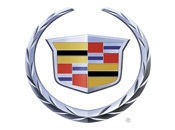2013 Cadillac SRX Car Insurance Rates
Searching for lower insurance coverage rates for your Cadillac SRX? Are you confused by the dozens of insurance coverage company choices? You’re not the only one! Consumers have so many options that it can easily become a ton of work to find the best price.
Automobile Insurance Quotes
There are several ways to compare Cadillac SRX car insurance prices but some are more efficient than others. You could waste time talking to agents in your area, or you could use the internet to accomplish the same thing much quicker.
Many popular insurance companies take part in a program that enables customers to enter their policy data once, and at least one company provides a quote based on that information. This saves time by eliminating form submissions to each individual car insurance company.
To compare 2013 Cadillac SRX rates using this form now click here to open in new window.
The one disadvantage to getting quotes like this is you can’t choose which carriers you want to price. So if you prefer to pick specific providers to request quotes from, we have a page of low cost car insurance companies in your area. Click here to view list.
However you get your quotes, ensure you are comparing identical information for every company. If each company quotes different liability limits it will be next to impossible to determine the lowest rate for your Cadillac SRX. Slightly different coverage limits may result in a large different in cost. It’s important to know that obtaining a wide range of quotes helps you find lower pricing.
Tailor your coverage to you
When it comes to buying coverage, there really is no “perfect” insurance plan. Every situation is different.
For instance, these questions could help you determine if your situation could use an agent’s help.
- Do I need replacement cost coverage on my 2013 Cadillac SRX?
- Can I make deliveries for my home business?
- Do I need roadside assistance coverage?
- Is my Cadillac SRX covered if I use it for business?
- Is a new car covered when I drive it off the dealer lot?
- Do I need higher collision deductibles?
- Is extra glass coverage worth it?
- How can I find cheaper teen driver insurance?
If you can’t answer these questions but one or more may apply to you, you may need to chat with a licensed insurance agent. If you don’t have a local agent, take a second and complete this form.
Car insurance coverage information
Understanding the coverages of your insurance policy helps when choosing the best coverages and proper limits and deductibles. The terms used in a policy can be impossible to understand and nobody wants to actually read their policy.
Comprehensive coverage
Comprehensive insurance pays to fix your vehicle from damage caused by mother nature, theft, vandalism and other events. A deductible will apply and then insurance will cover the rest of the damage.
Comprehensive can pay for things such as fire damage, damage from flooding, rock chips in glass and vandalism. The highest amount a insurance company will pay at claim time is the cash value of the vehicle, so if your deductible is as high as the vehicle’s value consider dropping full coverage.
Liability coverage
This coverage can cover damage that occurs to other’s property or people in an accident. This insurance protects YOU against other people’s claims. It does not cover your own vehicle damage or injuries.
It consists of three limits, bodily injury for each person injured, bodily injury for the entire accident and a property damage limit. As an example, you may have values of 50/100/50 that means you have $50,000 bodily injury coverage, a per accident bodily injury limit of $100,000, and $50,000 of coverage for damaged propery. Another option is a combined limit which provides one coverage limit and claims can be made without the split limit restrictions.
Liability can pay for things like legal defense fees, structural damage, bail bonds and loss of income. How much coverage you buy is a personal decision, but it’s cheap coverage so purchase as much as you can afford.
Uninsured/Underinsured Motorist coverage
Your UM/UIM coverage provides protection from other motorists when they either are underinsured or have no liability coverage at all. Covered losses include medical payments for you and your occupants as well as your vehicle’s damage.
Because many people carry very low liability coverage limits, their limits can quickly be used up. So UM/UIM coverage is important protection for you and your family. Most of the time these limits are identical to your policy’s liability coverage.
Auto collision coverage
Collision coverage pays for damage to your SRX from colliding with another car or object. You will need to pay your deductible then your collision coverage will kick in.
Collision coverage pays for claims such as backing into a parked car, rolling your car, crashing into a ditch and hitting a mailbox. Collision coverage makes up a good portion of your premium, so you might think about dropping it from older vehicles. Another option is to bump up the deductible to get cheaper collision coverage.
Medical payments coverage and PIP
Medical payments and Personal Injury Protection insurance kick in for bills like rehabilitation expenses, doctor visits and pain medications. The coverages can be used to cover expenses not covered by your health insurance policy or if there is no health insurance coverage. They cover you and your occupants in addition to any family member struck as a pedestrian. PIP coverage is only offered in select states but can be used in place of medical payments coverage

